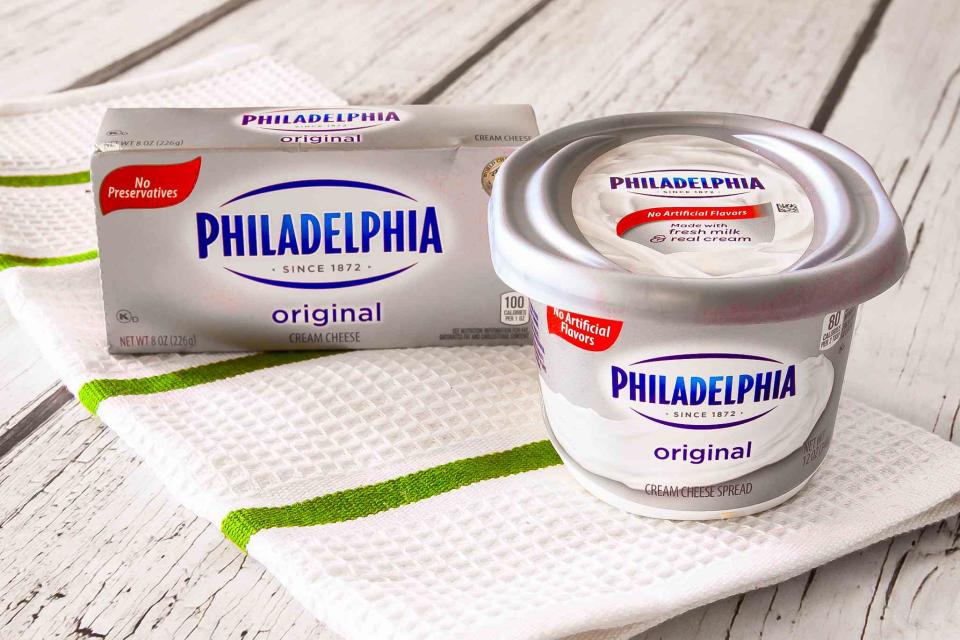The Only Way You Should Store Cream Cheese, According to Philadelphia
How long can you safely leave your cream cheese out on the counter?

Simply Recipes / Getty Images
Between my morning everything bagel and the abundance of creamy recipes I test and develop, my fridge is almost always stocked with a brick or four of cream cheese. Its one-two punch of decadence and tang is the secret weapon of many a comfort food, from irresistible hot crab dip to melt-in-your-mouth Japanese cheesecake.
Much like butter, cream cheese is often easiest to cook with when softened to room temperature. Typically I pull a foil-wrapped brick out of my fridge before baking and hope it becomes adequately soft by the time I’ve prepared and measured my other ingredients.
Is it scientific? No. Does it work? Only sometimes. So I thought it was high time I figured out how long I could safely keep cream cheese out on the counter and how it is supposed to be stored once I open the packaging.
Luckily, Megumi Takahashi, the Associate Manager for Kraft Heinz Culinary (parent company of Philadelphia), had all the answers I needed.
How Long Can You Safely Leave Cream Cheese Out On The Counter?
According to Takahashi, “Before the inner foil package is opened, Philadelphia cream cheese can be kept at room temperature for up to one hour.” This is great news for us bakers because unless your kitchen is particularly cold, it usually only takes about 30 minutes for cream cheese to come to room temperature. I like to give the block a gentle poke with my finger to check on its level of softness; it should yield with slight pressure.
Things are a bit more complicated if you’ve already opened the foil packaging.
Takahashi told me that due to varying environmental factors in individuals’ homes, it’s safest to use your opened cream cheese “within a few minutes.”
If you find yourself in this position, needing to quickly soften an already open block, I suggest turning to your microwave, the best tool for speeding up the softening process. Completely remove the foil packaging and place your cream cheese on a microwave-safe plate. Microwave on low power (I usually do 30 to 40%) for 20-second increments until the cream cheese is softened. The process goes even more quickly if you cut the cream cheese into smaller, equally-sized cubes.

Simply Recipes / Mark Beahm
What’s the Best Way To Store Opened Cream Cheese?
Takahashi suggests keeping the foil on partially used blocks of cream cheese, and reinforcing it with a layer of plastic wrap to keep air out.
To further elongate freshness, store the double-wrapped cheese in an airtight container. With this method, open cream cheese will stay fresh for 10 days. As for unopened packages, you can just refer to the expiration date printed on the package.
Freeze Cream Cheese for Longer Storage
If you’ve got some cream cheese you won’t be able to use before the expiration date, freezing could be a good option.
America’s Test Kitchen experimented with defrosting previously frozen cream cheese and found that it is perfectly usable depending on the application. Due to the water content in cream cheese, previously frozen blocks become gritty and crumbly once defrosted, meaning it’s no good for schmearing on bagels or stirring into cream cheese-forward recipes like cheesecakes or cream cheese frosting.
However, for baking recipes like pound cake and biscuits where the texture of the cheese is hidden, the previously frozen stuff worked just fine. I think these cream cheese pecan cookies would be the perfect candidate.
Read the original article on Simply Recipes.


